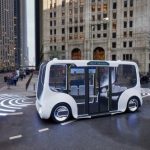 Technology
Technology  Technology
Technology  Humans
Humans 10 Everyday Human Behaviors That Are Actually Survival Instincts
 Animals
Animals 10 Animals That Humiliated and Harmed Historical Leaders
 History
History 10 Most Influential Protests in Modern History
 Creepy
Creepy 10 More Representations of Death from Myth, Legend, and Folktale
 Technology
Technology 10 Scientific Breakthroughs of 2025 That’ll Change Everything
 Our World
Our World 10 Ways Icelandic Culture Makes Other Countries Look Boring
 Misconceptions
Misconceptions 10 Common Misconceptions About the Victorian Era
 Mysteries
Mysteries 10 Strange Unexplained Mysteries of 2025
 Miscellaneous
Miscellaneous 10 of History’s Most Bell-Ringing Finishing Moves
 Technology
Technology Top 10 Everyday Tech Buzzwords That Hide a Darker Past
 Humans
Humans 10 Everyday Human Behaviors That Are Actually Survival Instincts
 Animals
Animals 10 Animals That Humiliated and Harmed Historical Leaders
Who's Behind Listverse?

Jamie Frater
Head Editor
Jamie founded Listverse due to an insatiable desire to share fascinating, obscure, and bizarre facts. He has been a guest speaker on numerous national radio and television stations and is a five time published author.
More About Us History
History 10 Most Influential Protests in Modern History
 Creepy
Creepy 10 More Representations of Death from Myth, Legend, and Folktale
 Technology
Technology 10 Scientific Breakthroughs of 2025 That’ll Change Everything
 Our World
Our World 10 Ways Icelandic Culture Makes Other Countries Look Boring
 Misconceptions
Misconceptions 10 Common Misconceptions About the Victorian Era
 Mysteries
Mysteries 10 Strange Unexplained Mysteries of 2025
 Miscellaneous
Miscellaneous 10 of History’s Most Bell-Ringing Finishing Moves
10 Creative Technologies Taking on Climate Change
As climate change intensifies, the need for innovative solutions has never been more urgent. Scientists, entrepreneurs, and communities around the world are creating new technologies and implementing unique strategies to combat environmental issues from all angles. While some well-known initiatives like solar power and electric cars are common in the fight against climate change, many lesser-known projects are emerging, taking inventive approaches to carbon reduction, ecosystem restoration, and sustainable energy.
From capturing carbon in Iceland’s volcanic rock to growing massive seaweed farms that act as underwater carbon sinks, these initiatives demonstrate the power of human creativity and ingenuity. Here’s a look at ten cutting-edge projects and technologies, each with a fascinating approach to fighting climate change.
Related: 10 Environmentally Friendly NASA Spinoffs
10 Direct Air Capture Plants in Iceland
In Iceland, a pioneering technology called Direct Air Capture (DAC) is actively pulling carbon dioxide straight out of the air and locking it away permanently. Climeworks, a Swiss company, has partnered with Icelandic firms to build Orca, the world’s largest DAC facility. This plant sucks in air, separates the CO₂ using special filters, and then injects it into basalt rock formations where it mineralizes, effectively turning the CO₂ into stone. Orca’s capacity is still small—only about 4,000 tons of CO₂ per year—but it’s a crucial step toward scaling this technology to reduce atmospheric CO₂ levels significantly.
What makes this technology fascinating is its potential to offset emissions that are difficult to eliminate through other means, such as those from heavy industry. Climeworks has plans to expand DAC operations globally, improving efficiency and lowering costs to make the technology accessible worldwide. While it won’t solve climate change alone, DAC offers a promising way to remove CO₂ from the atmosphere, complementing efforts to cut emissions at their source.[1]
9 Seaweed Farming for Carbon Sequestration
Seaweed farming is gaining attention as a natural and highly effective carbon sink. Seaweed grows faster than most land-based plants and absorbs large amounts of CO₂ in the process. Running Tide, a company in Maine, is developing seaweed farms designed to capture carbon dioxide on a massive scale. Their concept is to grow seaweed in the open ocean and, after harvesting, sink it to the ocean floor, where the carbon stored within it remains sequestered for hundreds to thousands of years.
This initiative not only sequesters carbon but also provides a habitat for marine life, enhancing biodiversity. The simplicity and low environmental footprint of seaweed farming make it an attractive option compared to more resource-intensive technologies. With pilot projects underway, companies and researchers are exploring the scalability of seaweed as a natural carbon capture solution that can benefit marine ecosystems while addressing climate goals.[2]
8 “Cool Roofs” Reflecting Solar Radiation
Cool roofs are an ingenious way to combat urban heat islands and reduce the need for air conditioning in hot climates. These roofs are coated with reflective materials or painted white to reflect solar radiation instead of absorbing it. Los Angeles has implemented a cool roofs initiative, requiring new residential buildings to have reflective roofing to combat rising temperatures. The city has also expanded the initiative to other public buildings and schools to maximize its impact on urban cooling.
The potential of cool roofs goes beyond temperature reduction. By reflecting sunlight, they reduce energy demand, which in turn lowers greenhouse gas emissions from power plants. Studies have shown that widespread adoption of cool roofs could significantly cool urban areas, reduce smog, and save on cooling costs, making it a simple yet highly effective climate solution that can be implemented on a large scale.[3]
7 Methane Capture from Agriculture Waste
Methane is a potent greenhouse gas, and agriculture is one of its largest sources, particularly from livestock waste. Companies like Brightmark and Vanguard Renewables are tackling this problem by capturing methane from manure and converting it into renewable natural gas. Their facilities collect animal waste from farms, process it in anaerobic digesters to capture methane, and refine the gas to create a clean energy source. This renewable gas can then be injected into pipelines, providing an alternative to fossil fuels.
This methane capture not only reduces emissions but also provides farmers with an additional revenue stream, as they’re compensated for their waste. By turning a greenhouse gas into a valuable commodity, methane capture initiatives like these offer a way to make agriculture more sustainable while providing clean energy to communities.[4]
6 Living Seawalls to Restore Marine Ecosystems
Living seawalls are designed to mimic the natural structure of coral reefs or rocky shorelines, helping to reduce wave impact while providing habitat for marine organisms. In Sydney, the Living Seawalls project involves attaching concrete panels with ridges, crevices, and grooves to existing seawalls, transforming them into thriving ecosystems. These seawalls foster biodiversity by attracting fish, mollusks, and other species, helping to improve water quality and resilience against erosion.
Living seawalls offer a dual benefit: protecting coastlines and enhancing marine biodiversity. As climate change increases sea levels and threatens coastal habitats, living seawalls are a sustainable solution that aligns urban development with ecosystem preservation. The concept has drawn attention globally, with similar projects popping up in coastal cities, showing that infrastructure can coexist with and even support nature.[5]
5 Biochar for Soil Enrichment and Carbon Storage
Biochar, a form of charcoal made by burning organic material in low-oxygen conditions, is gaining traction as a climate solution. When added to soil, biochar not only improves soil fertility but also locks carbon in the ground for hundreds to thousands of years. The organization Carbon Gold has pioneered biochar projects that help sequester carbon while enhancing agricultural productivity, particularly in regions with degraded soil.
Biochar provides multiple climate benefits by enriching the soil, increasing crop yields, and offering a long-term carbon storage solution. Pilot programs are underway in various parts of the world, including the U.S. and Kenya, and show promise in scaling biochar’s use in farming and forestry. Its potential for both agriculture and climate makes it a versatile tool in the fight against climate change.[6]
4 Electric Aviation to Cut Short-Haul Flight Emissions
Electric planes may seem futuristic, but they’re already taking flight, particularly for short-haul routes. Companies like Ampaire and Eviation are developing electric aircraft that could replace traditional planes for short flights. Eviation’s Alice, an all-electric plane designed for regional travel, completed its first test flight in 2022. These planes produce zero emissions during flight and are much quieter, making them ideal for short distances.
Electric aviation is still in its early stages, but as battery technology improves, electric planes could help reduce the airline industry’s carbon footprint significantly. With commercial electric flights projected to start within the next decade, this technology offers a cleaner alternative for regional air travel, paving the way for sustainable aviation.[7]
3 Community Solar Gardens for Collective Energy Use
Community solar gardens are a unique approach to renewable energy that allows individuals who may not have the space or means to install their own solar panels to benefit from solar power. In a community solar garden, panels are installed in a central location, and members of the community can subscribe or purchase shares in the project. Each member receives credits on their energy bills based on their share of the electricity generated.
These projects have become popular in cities like Denver and Minneapolis, where residents are joining to fund community solar. Not only do solar gardens make renewable energy accessible, but they also foster a sense of community responsibility toward sustainability. Community solar is proving to be an effective, inclusive model for expanding solar power access beyond traditional residential installations.[8]
2 Enhanced Rock Weathering to Absorb CO₂
Enhanced rock weathering (ERW) is an innovative method for capturing carbon by accelerating a natural process. When certain rocks, like basalt, break down, they absorb CO₂ from the atmosphere. ERW speeds up this process by crushing these rocks and spreading them on fields or coastal areas, where they can interact with CO₂ and lock it away. The company CarbonCycle is conducting ERW field trials on farmland, testing its potential to sequester large amounts of carbon while benefiting soil health.
This approach is still experimental, but early results indicate it could become a scalable and low-cost carbon sequestration method. By leveraging a natural process, ERW offers a non-invasive solution that aligns with agricultural practices, providing a sustainable way to capture CO₂ and enhance soil quality.[9]
1 Repurposing Abandoned Oil Wells for Geothermal Energy
The U.S. has thousands of abandoned oil and gas wells, many of which could be repurposed to generate geothermal energy. Geothermal energy taps into the earth’s natural heat, a renewable and low-emission source of power. Fervo Energy is exploring ways to convert old wells into geothermal plants, which could turn a significant environmental liability into a valuable clean energy resource. Repurposing these wells not only provides energy but also addresses methane leaks, which are a major contributor to greenhouse gas emissions.
Geothermal energy has historically been limited by location, but with this approach, it could become more accessible and widespread. Repurposing abandoned wells to generate geothermal energy presents an innovative way to reduce fossil fuel dependence, cut methane emissions, and create a new source of clean energy, making it a promising addition to the renewable energy landscape.[10]








